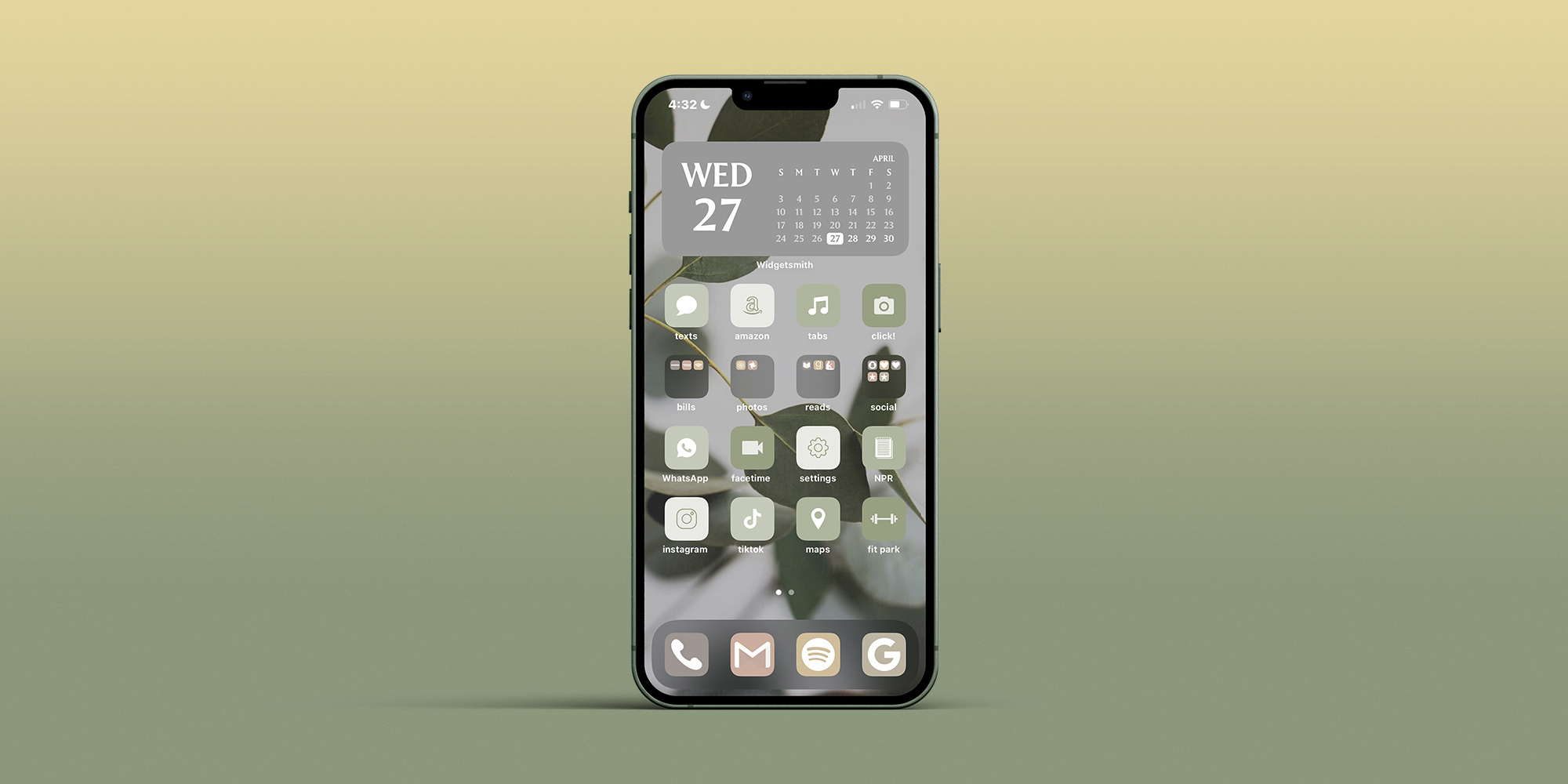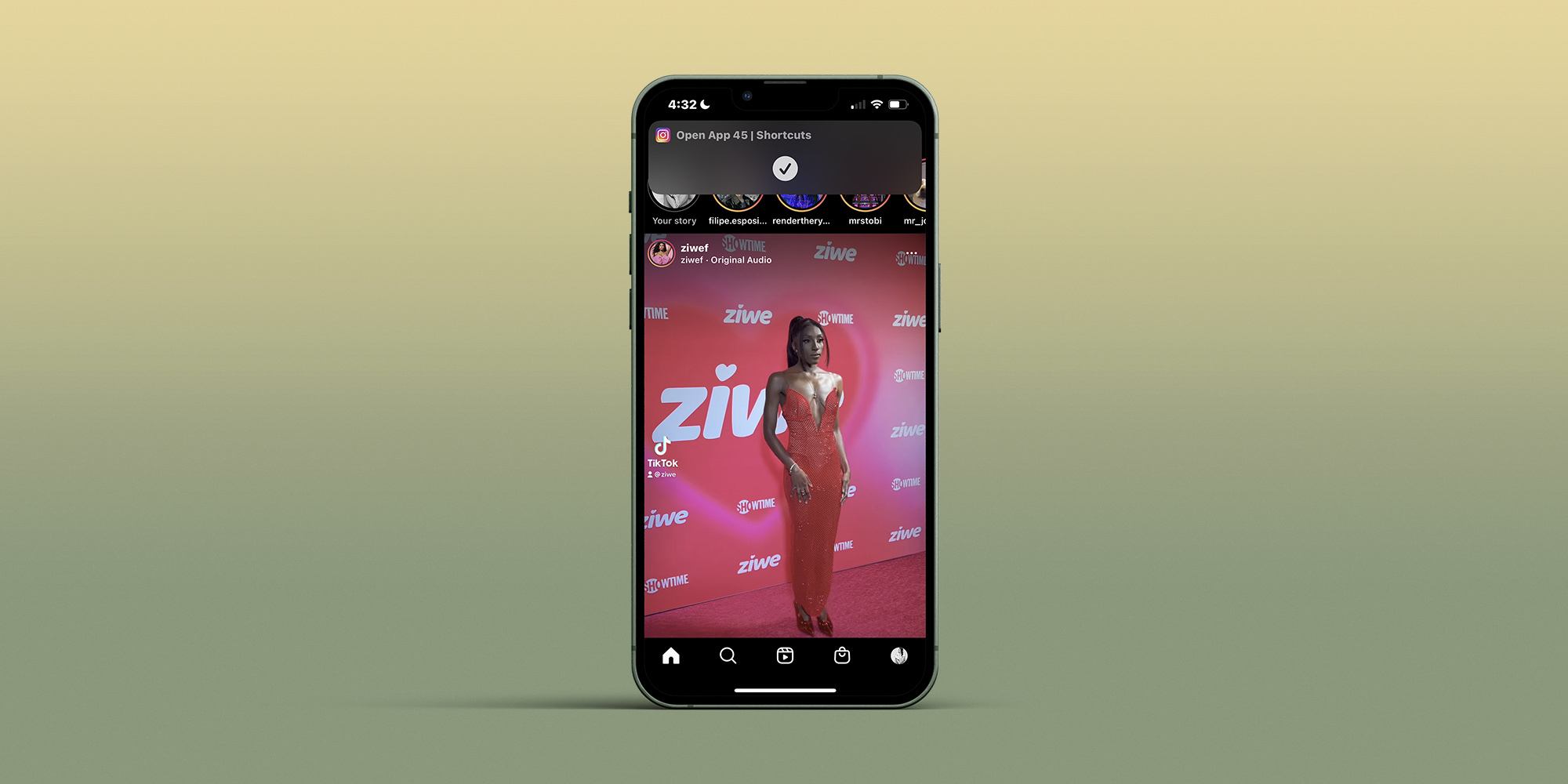Apple should make iOS 16 customization more like Android’s: Here’s what I want to see

Apple doesn’t offer truly individualized customization of its products or interfaces to its users, and if anyone wants to customize the look of their Apple products – specifically their home screens – they’re in for A Time. With iOS 16 coming in September, there’s an opportunity for Apple to give consumers needed autonomy.
The only cell phones I’ve ever owned have been a Nokia (shoutout to Snake, my first love), a Blackberry, and an iPhone, none of which I’ve ever fully customized.
I am currently using my seventh iPhone and have always believed that the home screen of my smartphone is what it appears. Sure, I can “edit” the home screen’s layout with apps, widgets, and folders for organization, but I’ve never been able to make it more me – you know, how Android users can make their phones more them. That all changed this week when I tried my hand at customizing my phone’s home screen using two icon packs I purchased from Etsy.
Using this article (and its author Michael Potuck), as my guide, I gradually became more familiar with Widgetsmith and Shortcuts, along with everything else that’s required to make a customized home screen on my iPhone. Here’s what I had to do – which I will never do again because it took far too long.
Own an icon pack
First of all, the sheer number of icon packs available online is overwhelming. Although it is fun to look through the options online, I soon lost interest. It was almost like shopping in a mall instead of a boutique owned by an independent business.
You can find free icon packs, grab icon packs from Etsy, or create your own icon pack (though I hear this is difficult), and there are, quite literally, tens of thousands of packs to choose from. I spent about five minutes online before deciding on this icon pack for $6, and I got to work.
Download multiple zip files and PDFs
This was the first step that caused problems, even though it seemed like it was a small one. Following the instructions of the Etsy seller I downloaded zip files and pdfs. Once they were on my desktop, I needed to open them. Then, I had the task to open the zip file folders. It was tedious. Once I had access to the icon and widget folders, I, of course, had to choose which icons and widgets I wanted out of the hundreds available in the icon pack – I genuinely had no idea how bad it would get.
Copy and paste icons into Photos
I didn’t anticipate this step being so laborious, but wow was it ever. You have to cross-reference the apps you already have on your phone with the matching icons from the downloaded zip folders, and then you have to copy and paste those icons into Photos. Make sure you have iCloud syncing on, or you won’t be able to access the icons you chose on your phone.
Use shortcuts to redesign apps
Enter: the absolute epicenter of my frustration with Apple home screen customization.
Never have I ever become so familiarized with an app in the way I have become with Shortcuts during this process, and I am certain that I’ve barely scratched the surface of everything Shortcuts can actually do.
I don’t know where to start.
Basically, I had to open Shortcuts, hit the + sign in the upper right-hand corner, tap “Add Action,” type “open app” in the search bar, then tap “Open App” under “Scripting,” THEN choose from a list of apps I have on my phone in order to customize one of them.
Let’s suppose I want to personalize the Instagram app.
After I selected Instagram, I needed to click the three blue dots in the upper left corner. I chose “Add to My Home Screen,” renamed the app and then picked the photo from iCloud that would accompany it. Finally, I clicked “Add.” Honestly, this is all far too much as I’m reliving it, and I hate that I feel so compelled to write about it, but here we are.
At this stage, the app was in my hands using the icon packs I bought, which I copied into Photos and then redesigned in Shortcuts as I wished. I then had to repeat the re-design via Shortcuts with every app I wanted on my home screen, which took me no less than two hours. Now, the fun part?
Aesthetics over everything
If you are like me, and like things to be even and aligned, this step of personalizing your home screen can take many hours. You have your re-designed apps-turned-shortcuts! These are the correct color palettes (you believe). You’ve renamed each app in all lowercase (with the exception of WhatsApp) for reasons you can’t eloquently explain!
Even if your home is not as cluttered and crowded as mine, it can take you hours to decide how you will use the space. An important note here, which takes additional time: When arranging your home screen, you need to long-press the original apps to “Remove from Home Screen” to alleviate clutter and make room for your shortcuts, while being careful to not actually delete the original app – otherwise your shortcuts won’t work.

I genuinely love how my phone now looks after an entire morning of customizing my home screen, but there are still issues.
The gray widget calendar at the top, for example, doesn’t actually sync to my iCal, but rather, opens the app Widgetsmith – something I had to download to create that particular widget in the first place; there is no workaround for this, lest I download a third-party calendar app, which I am certainly not. This means that I either have to swipe right on my home screen to access my actual calendar or search for it in the pull-down menu. Kyle, my Android-user coworker, was shocked when I brought up this issue to him.
Additionally, every time I open any of my newly-created, earthy apps (re: Shortcuts), I see this little swoopdy-woop that comes and goes – which can be dismissed with a swipe – but will appear every time I open a shortcut, forever, in perpetuity:

Last but not least, now that I’ve re-designed all of my apps to look exactly how I want them to with the help of my icon pack on my home screen, I am left with a clutter of icons, widgets, and wallpapers in my photo album(s) in addition to zip files and folders on my desktop that now need to be cleaned up.
iOS 16 to the rescue?
After chatting with some of my colleagues over at 9to5Google, I learned some things that Apple’s forthcoming iOS 16 could do to improve this process.
To start, iOS 16 could simply include any available themes for our home screens, let alone customizable ones. Did you know that what took me four hours would take someone about a minute and a half on an Android? I’ve seen a video of it being done. Android users have loads of built-in themes to choose from, and that barely scratches the surface.
More specifically, did you know that when you pick a color theme on an Android for your home screen, apps that are native to the phone automatically update to that specific color palette? Imagine not having to individually create and customize each and every one of your apps into a shortcut, whether or not they’re from a third party. If iOS 16 at the very least allowed us to customize native apps and widgets with pre-chosen themes, that would be a huge step in the right direction.
Final thoughts
I want to say here for the record, that on a scale of tech-savviness – 10 being extremely tech-savvy, and 1 being not at all – I’m like…a 7, probably, at least in comparison to your average person (not in comparison to literally any of my coworkers). Despite my knowledge and understanding of very particular technology, the process was extremely difficult. From start to finish, it took me approximately four hours to create my home screen design.
What did Apple do? They kept us loyal, and, for the most part, wildly loyal, customers who could customize their own Apple devices. Now that I’ve seen what my home screen can look like – while also understanding on a level that I wish I didn’t – what it takes to get a home screen that you love, I want everyone to have icons, widgets, and themes that reflect their personality. Why does Apple refuse to give us any autonomy as consumers?
As I was lamenting to my coworkers at 9to5Google about my customization ordeal, Ben Schoon said, rather joyously, “Come to Android – it’s so much easier ..” I won’t, again for reasons I can’t explain, but that’s not the point.
The point is this: for Apple to gatekeep customization from its user base is, at this stage, an antiquated, frustrating, and frankly outlandish approach for a company that touts creativity, inspiration, and innovation in each of its individual products. If I want to be inspired by my device, to be creative with my device, to innovate on my device, why can’t I make it my own?
Source: 9to5mac.com